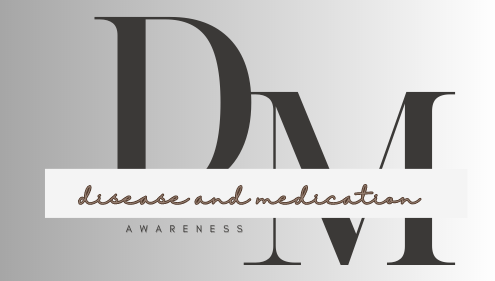History
Penicillin is a miraculous discovery in the realm of medicine, credited with saving countless lives since its inception. Discovered by Scottish bacteriologist Alexander Fleming in 1928, penicillin marks the dawn of modern antibiotics. Its story begins serendipitously when Fleming noticed that a mold called Penicillium notatum had inhibited the growth of bacteria on a petri dish. This chance observation led to the isolation and purification of penicillin, revolutionizing the treatment of bacterial infections.
Introduction to Penicillin
Penicillin is a group of antibiotics that are derived from mold. It is one of the first and most widely used antibiotics. Penicillin is effective against a wide variety of bacterial infections, including pneumonia, strep throat, syphilis, and gonorrhea. Penicillin is a relatively safe antibiotic, but some people can be allergic to it. Allergic reactions to penicillin can range from mild (such as a rash) to severe (such as anaphylaxis).
How does penicillin work exactly?
Penicillin exerts its antimicrobial effect by targeting the bacterial cell wall synthesis. Bacteria rely on cell walls for structural integrity and protection. Penicillin interferes with the final stages of bacterial cell wall synthesis by inhibiting the enzyme transpeptidase, also known as penicillin-binding proteins (PBPs). PBPs play a crucial role in cross-linking the peptidoglycan strands, a vital component of the bacterial cell wall. By inhibiting PBPs, penicillin disrupts the building of the cell wall, which causes bacterial cell lysis and ultimately death.
Types of penicillin
Penicillin antibiotics are classified into several types, each with its own spectrum of activity and characteristics. Some common types of penicillin include:
- Penicillin G (Benzylpenicillin):
- Administered intravenously or intramuscularly.
- Used for severe infections such as syphilis, endocarditis, and meningitis.
- Side effects may include allergic reactions (ranging from mild rash to severe anaphylaxis), gastrointestinal disturbances, and rare instances of neurotoxicity.
- Penicillin V (Phenoxymethylpenicillin):
- Administered orally.
- Used for less severe infections like strep throat, dental infections, and mild skin infections.
- Side effects including allergic reactions and gastrointestinal upset.
- Aminopenicillins (such as Amoxicillin and Ampicillin):
- Broad-spectrum antibiotics are effective against a vast range of bacteria.
- Often used for respiratory tract infections, urinary tract infections, and certain gastrointestinal infections.
- Side effects include allergic reactions, gastrointestinal disturbances, and in some cases, antibiotic-associated diarrhea or rash.
- Antistaphylococcal Penicillins (such as Methicillin and Cloxacillin):
- Specifically active against Staphylococcus aureus and other penicillin-resistant bacteria.
- Used for treating infections caused by methicillin-susceptible Staphylococcus aureus (MSSA).
- Side effects are similar to other penicillins but may also include hepatotoxicity (liver damage) and nephrotoxicity (kidney damage).
- Extended-Spectrum Penicillins (such as Piperacillin and Ticarcillin):
- Effective against a broader range of bacteria, including some Gram-negative bacteria.
- Often used in hospital settings for severe infections such as pneumonia, intra-abdominal infections, and complicated urinary tract infections.
- Side effects may include allergic reactions, gastrointestinal disturbances, and increased risk of Clostridium difficile infection.

What is penicillin used for?
Penicillin and its derivatives are widely used in the treatment of various bacterial infections, ranging from mild to severe. Some common uses are
- Strep Throat and Tonsillitis: Penicillin is often prescribed to treat streptococcal infections, including strep throat and tonsillitis.
- Skin Infections: It is effective against bacterial skin infections such as impetigo and cellulitis.
- Ear Infections: Penicillin is commonly used to treat middle ear infections caused by bacteria.
- Pneumonia: Certain types of pneumonia, particularly those caused by Streptococcus pneumoniae, can be treated with penicillin.
- Syphilis: Penicillin is the preferred treatment for syphilis, a sexually transmitted infection caused by the bacterium Treponema pallidum.
- Endocarditis: Penicillin is often included in the treatment regimen for infective endocarditis, a serious infection of the heart valves.
- Meningitis: It may be used in the treatment of bacterial meningitis, particularly when caused by susceptible organisms.
Side effects of penicillin
Common side effects of penicillin include:
- Allergic reactions, from mild rash to severe anaphylaxis
- Nausea
- Vomiting
- Diarrhea
- Itching or hives
- Oral thrush (candidiasis)
- Neurotoxicity
- Hepatotoxicity
- Nephrotoxicity
- Antibiotic-associated diarrhea
Penicillin allergy
A penicillin allergy is an immune-mediated reaction to penicillin or related antibiotics. A person with a penicillin allergy is exposed to penicillin or its derivatives, their immune system perceives the drug as a threat and begins an allergic response. This response can range from mild symptoms such as rash or itching to severe, life-threatening reactions like anaphylaxis.
Anaphylaxis is the most severe manifestation of a penicillin allergy and requires immediate medical attention. It is characterized by a sudden and severe allergic reaction that can lead to shock, respiratory distress, and loss of consciousness.
If you suspect you have a penicillin allergy or have experienced an adverse reaction to penicillin in the past, it’s crucial to inform your healthcare provider.
Antibiotic resistance

When penicillin resistance develop?
Penicillin resistance can develop when bacteria undergo genetic mutations or acquire resistance genes through horizontal gene transfer, enabling them to survive in the presence of penicillin antibiotics. This resistance can occur over time due to selective pressure exerted by the widespread use , misuse and incomplete treatment of antibiotics.
Conclusion
Penicillin, a remarkable antibiotic, has been instrumental in combating bacterial infections. However, its effectiveness is threatened by the emergence of antibiotic resistance. Responsible antibiotic use, adherence to treatment regimens, infection control measures, and the development of new antibiotics are crucial in addressing this challenge.
